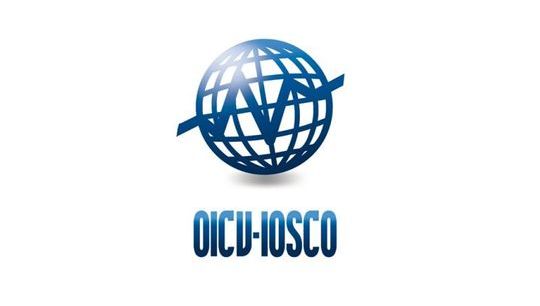Crypto as an asset class: Seeing past the volatility
By Kareem Sadek; Gautam Ganeshan; Anthony Tuths, KPMG
Published: 19 June 2023
Despite the turmoil of the past few years, asset managers continue to pile into crypto assets. This article explains why and – perhaps more importantly – how they are striving to reduce their risks and maximise their opportunities.
The rapid development and adoption of an entirely new asset class was never going to be smooth. In the early days of crypto assets, the risks were all about the newly developed technology, immense price volatility and uncertain government policy. As the investment world started to embrace crypto as an emerging investable asset class, the risks became more systemic and governance focused.
The past year was certainly tumultuous on that front. The collapse of the Terra Luna ecosystem and the UST stablecoin in May 20221 reminded investors about the importance of assessing the underlying collateral quality and liquidity. The demise of FTX taught investors about the value of robust due diligence and governance. The downstream implications of these – and other governance oversights – brought intense scrutiny to the crypto asset trading ecosystem.
Emerging stronger
As has been the case in past financial crises, lessons are being learned and practices are improving. On the asset side, governance is being enhanced and strengthened. Investors are conducting more robust due diligence and monitoring. Regulators are exploring what guidance they can provide to help reduce the governance risk. Everyone – investment teams in particular – are taking much longer to scrutinise assets and investment opportunities.
The ‘crypto winter’ also helped stakeholders better understand the roles and responsibilities of the different players in the crypto ecosystem. Unlike the traditional financial system where functions like processing, settlement and custody are very well defined and segregated, crypto ecosystem players may fulfil multiple roles through vertical integration of responsibilities. Greater familiarity with the risks and counterparties has allowed investment managers to create better diligence frameworks and controls, thereby enabling them to take a more informed approach to investing in crypto assets.
Testing the waters
While a healthy dose of scepticism remains, KPMG professionals’ conversations with asset managers across segments suggest that many recognise the important role crypto will play in helping them achieve their long-term investment objectives. And that is driving more asset managers to dip their toes into the crypto waters.
At the very basic end of the spectrum, asset managers are using centralised exchanges to place buy and sell orders much like they would on a traditional equities exchange. This approach has enabled investment exposure to crypto assets while limiting the need to build specialist technical knowledge. Players are also gravitating towards the services side of the equation, creating crypto-based ETF products and offering crypto prime brokerage solutions. Many venture capital funds have been busy investing into companies on the leading edge of Web3 ecosystem development.
Adoption appears to be on the rise. More recently, mainstream financial institutions are starting to relax their cautious approach to crypto markets, with some major banks and investment firms launching or exploring their own crypto asset products and services. Moreover, the use cases for many of the underlying technologies (particularly digital ledger technology) are expanding beyond just financial transactions, with applications in areas such as real-world asset (RWA) tokenisation, digital identity, collectables, supply chain management, and decentralised social media. With the potential for innovation and growth in the crypto space expanding, more investors and entrepreneurs are flocking into the field.
Betting on crypto
There are three main reasons that asset managers are keen on crypto. The most common is to build capabilities and experience. Whether or not you believe crypto is the future, the reality is that it is a growing and increasingly investable asset class that is clearly here to stay. They recognise that crypto models are increasingly being used to tokenise traditional assets to enhance liquidity and improve operational efficiencies. The sooner investment managers start working in the space and understanding the nuances, the sooner they will be able to spot and take advantage of new and emerging opportunities.
The second reason is to capture early advantages in the emerging Web3 landscape. Venture capital players in particular, are hunting around to find the solutions and technologies that will unlock the next iteration of the internet. They are looking at crypto assets, marketplaces, and the underlying technology infrastructure. Others are looking to simply establish their credentials in the burgeoning new marketplace.
The last (but certainly not least) reason is for returns. There are examples of investors achieving staggering returns through savvy investments in crypto assets. The risks are likely higher than other traditional asset classes, albeit with heightened risk and price volatility. Typically, these investors have a time horizon of an investment cycle, which includes a period of low activity and adoption that precedes periods of intense speculation and mania.
Time for orientation
Regardless of your reasoning, your approach or your ambition in this market, KPMG professionals’ advice to all asset managers is to get educated. Crypto is still relatively new, very fast moving and evolves at innovation speed. It is complicated, with many new players, roles, products and opportunities. And the regulatory environment (where one exists) is largely inconsistent globally.
Investors need to be aware of the many nuances associated with crypto assets before they step into this market.
They also need to know why they are doing it. They need a coherent strategy that supports the organisational strategy and the investment strategy. They need to be clear about where they intend to play and what rules and guidelines they are setting for their investment teams. They need to be sure they have robust governance processes and controls before moving forward.
Here’s where the focus should be:
KPMG professionals’ experience helping asset managers develop and execute their crypto asset strategies suggests there are four key areas where asset managers and investors should want to focus:
- Enterprise risk management. Trading in crypto adds some additional layers of risk over top of the traditional risk categories – in particular, cyber risks, technology risks, operational risks and custody risks. The challenge is that the pace of innovation and change in crypto markets make monitoring and mitigating risks much more difficult. Familiar risk management tools may not translate. New market participants, trading processes and market structures may lack the historical data required for traditional risk assessments. New technologies and security protocols are expected to be required. And all of these risks are compounded by a lack of clear regulation or process standardisation. KPMG professionals’ view suggests those investing into crypto assets will likely want to assess their risks conservatively.
- Regulatory considerations. Regulatory responses to the increased use of digital assets varies by jurisdiction. Some have forged ahead by embracing digital asset regulation and others have chosen regulation by enforcement. While the EU currently sports a hodgepodge of different approaches, a new comprehensive regulatory regime (the Markets in Crypto-Assets or MiCA regulation) is expected to create harmonisation when it is passed sometime in early 2025. Other markets are also moving ahead – the UAE, for example, has created the world’s first authority with a mandate to focus solely on digital assets (the Virtual Assets Regulatory Authority or VARA). In this environment, asset managers should assess the current and future regulatory regimes that might impact their crypto strategy going forward.
- Service offering considerations. Institutional investors and asset managers should develop a clear strategy for crypto that aligns with their values and risk appetite. They will likely need to develop their ecosystem to allow them to rapidly scale their operational and technology infrastructure. When onboarding new trading counterparties or venues, they will likely want to engage in robust due diligence that appropriately reviews not just the counterparty’s risk controls but also their management team and corporate structures. And they should consider their approach to market access and the types of trading tools their teams will likely require in order to be effective.
- Technology risk considerations. While many of the technologies used in the crypto world derive base principles from blockchain technology, the specific implementation may differ significantly. It is important for asset managers to understand key risks associated with the technology used by various crypto products across underlying protocols, smart contracts, and custody.
Seeing past the volatility
As one might expect with the introduction of any new asset class, crypto has had its share of trip ups and stumbles. Some might argue that these are normal events in the maturation journey; their long-term impact may have been to make the markets more resilient, more transparent and more regulated.
Indeed, those able to look past the recent volatility to see crypto as an asset class may also see a long-term source of value. And many asset managers seem keen to increase their exposure to that.
1 The Alternative Investment Management Association Limited (AIMA) (2023, May). Digital Asset Trading - An AIMA Industry Guide. In https://www.aima.org/compass/practical-guides/digital-assets/digital-asset-trading.html.
Acknowledgements
George Djuric
KPMG in Canada
Email George Djuric
Mitchell Nicholson
KPMG in Canada
Email Mitchell Nicholson
Pramod Achanta
KPMG in the US
Email Pramod Achanta
James Suglia
KPMG in the US
Email James Suglia









